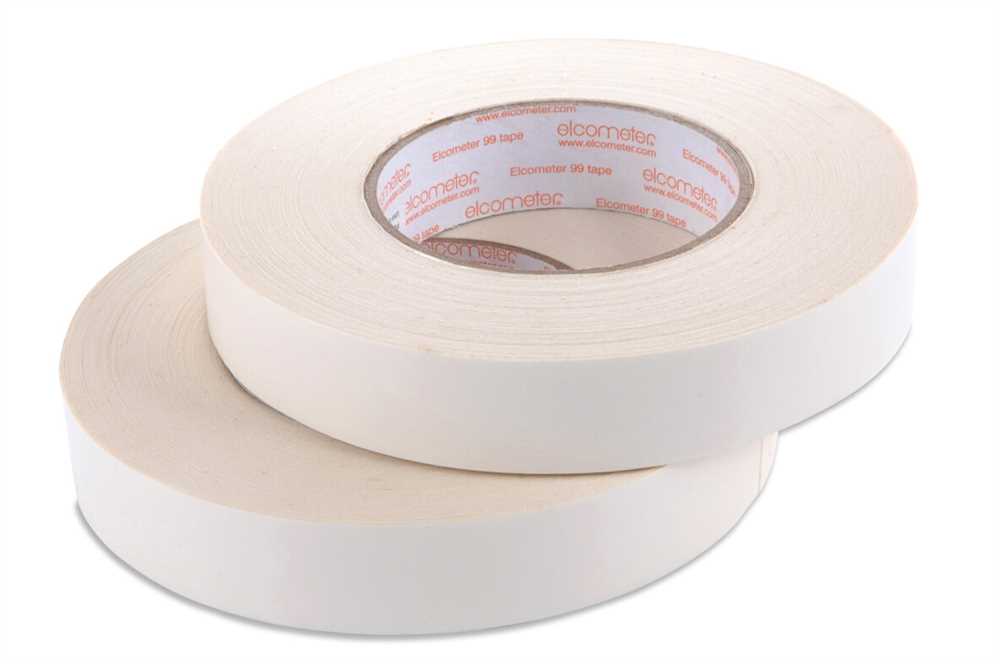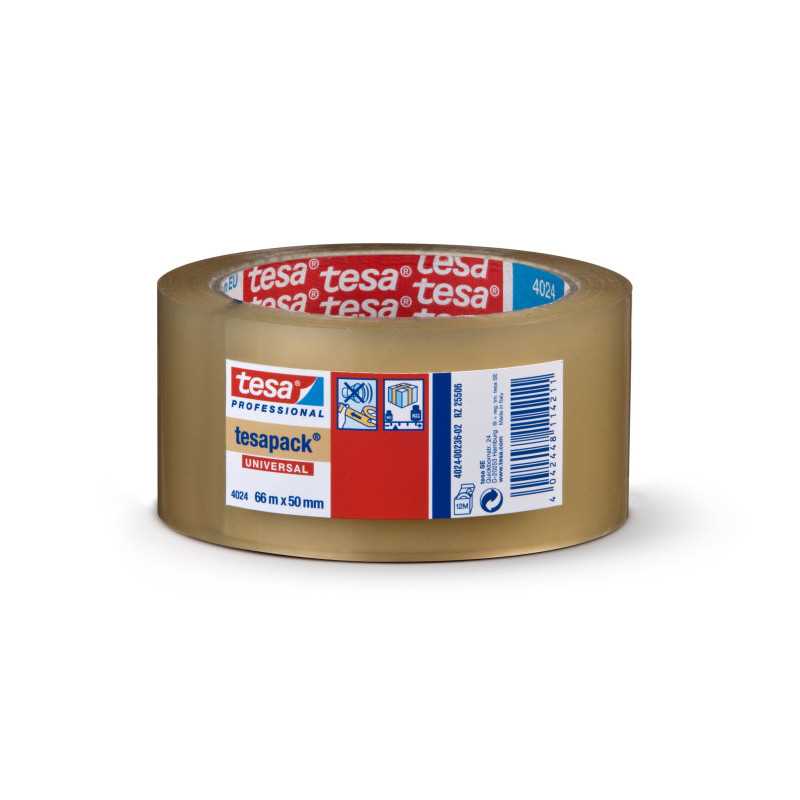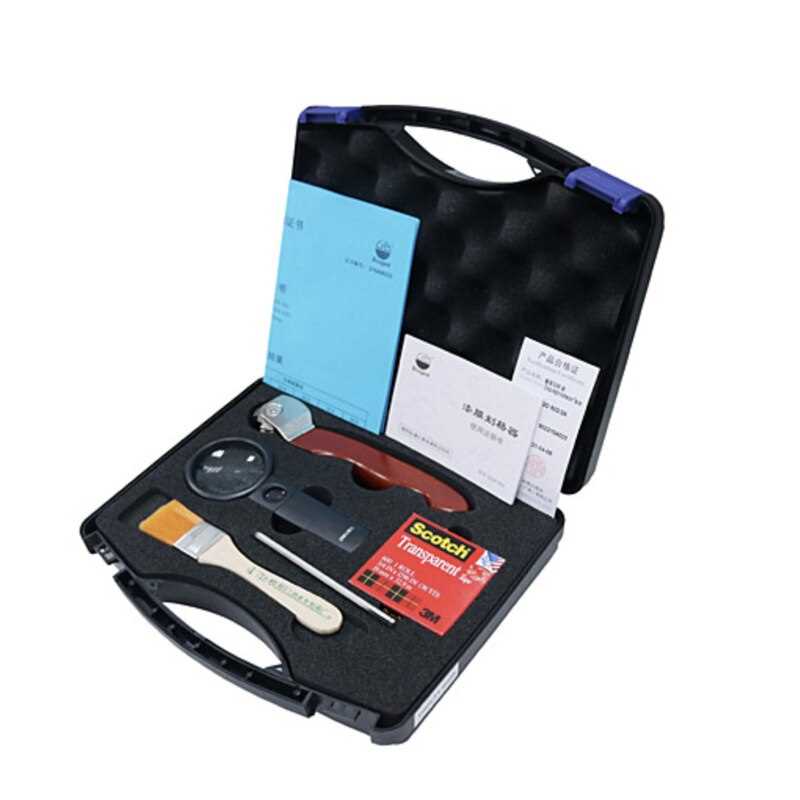
Adhesive bonding is a critical aspect of many industrial applications, ensuring the durability and performance of a wide range of products. The ISO 2409 adhesion test is a standardized method used to assess the adhesion strength between a coating or paint film and its substrate. This test helps manufacturers and quality control personnel evaluate the effectiveness of adhesives and coatings, allowing them to make informed decisions about product performance and durability.
The Iso 2409 adhesion test involves applying a lattice pattern of cuts or scratches to the coated surface and then applying a pressure-sensitive tape to the lattice. The tape is quickly removed, and the amount of coating that remains on the tape is visually assessed. This provides a measure of the adhesion strength – the higher the amount of coating removed, the weaker the adhesive bond.
The results of the Iso 2409 adhesion test are classified using a numerical scale, ranging from 0 to 5, with 0 indicating complete adhesion failure and 5 representing no adhesion failure. This scale allows manufacturers to determine the performance of their coatings and adhesives under various conditions, helping them identify any weaknesses in their products and make necessary improvements.
By conducting the Iso 2409 adhesion test, manufacturers can ensure that their coatings and adhesives meet the required standards for durability and adhesion strength. This test is especially crucial in industries where adhesion failure could lead to catastrophic consequences, such as aerospace, automotive, and construction. Through consistent testing, manufacturers can optimize their product formulations and processes, enhancing the reliability and longevity of their end products.
Iso 2409 Adhesion Test: What You Need to Know
The ISO 2409 adhesion test is a widely used method to determine the adhesion strength of coatings on various substrates. This test is especially important in industries such as automotive, aerospace, and construction, where maintaining the adhesion of coatings is crucial for the performance and durability of the products.
The ISO 2409 test involves applying a grid pattern on the coated surface using a specific tool called a cross-cut adhesion tester. The tool creates a series of parallel cuts through the coating, forming a grid pattern. After the cuts are made, a piece of adhesive tape is applied over the grid and then quickly removed. The adhesion strength of the coating is evaluated by visually assessing the amount of coating that has been removed from the substrate.
Key Points:
- The ISO 2409 adhesion test is used to assess the adhesion strength of coatings on different substrates.
- The test involves making a grid pattern of cuts on the coated surface and evaluating the amount of coating removed after applying and removing adhesive tape.
- Adhesion strength is determined by the visual assessment of the damaged area.
- The ISO 2409 test provides a qualitative assessment of adhesion but does not provide quantitative data.
- It is important to properly prepare the test samples and follow the standard procedure to ensure accurate results.
The ISO 2409 adhesion test is an important tool for quality control and product development in industries where adhesion is critical. It helps manufacturers ensure that their coatings can withstand the demands of the application and meet the required performance standards. By performing this test, companies can identify any potential adhesion issues early on and take corrective measures to improve the quality and durability of their products.
Overview of Iso 2409 Adhesion Test
The Iso 2409 adhesion test is a standard method used to determine the adhesion of paint and other coatings to various substrates. It provides a quantitative measure of the quality and strength of the bond between the coating and the substrate. This test is commonly used in industries such as automotive, aerospace, and construction to ensure the durability and performance of coatings in different environments and applications.
The Iso 2409 adhesion test involves applying a series of cuts through the coating in a crosshatch pattern using a cutting tool. The cuts are made at a 45-degree angle and are spaced at regular intervals. After the cuts are made, a piece of adhesive tape is applied to the coating and then quickly pulled off. The adhesion of the coating is then evaluated by examining the amount of coating that remains on the substrate after the tape is removed.
During the test, the quality and strength of the adhesion are assessed based on the rating scale provided by the Iso 2409 standard. This rating scale ranges from 0 to 5, with 0 indicating no adhesion failure and 5 indicating complete failure. A rating of 0 or 1 indicates excellent adhesion, while a rating of 3 or above indicates poor adhesion. The results of the test are used to determine the suitability of the coating for its intended application and to identify any potential issues or weaknesses in the coating system.
Key Steps of the Iso 2409 Adhesion Test:
- Prepare the substrate and coating surface.
- Crosshatch the coating using a cutting tool.
- Apply adhesive tape to the coating.
- Quickly and firmly pull off the tape at a 180-degree angle.
- Evaluate the adhesion based on the amount of coating remaining on the substrate.
- Assign a rating on the adhesion scale provided by the Iso 2409 standard.
The Iso 2409 adhesion test is a widely accepted method for evaluating the adhesion of coatings and is an important tool for quality control and product development. It provides a standardized and objective way to assess the performance and durability of coatings, allowing manufacturers to ensure that their products meet the required standards and specifications.
Purpose of Iso 2409 Adhesion Test

The Iso 2409 adhesion test is a widely recognized method used to assess the adhesion strength of paint, varnish, or related coating systems on metallic or non-metallic substrates. The primary purpose of this test is to evaluate the ability of a coating to adhere to a surface under specific conditions, simulating real-world scenarios. By measuring the adhesion strength, the test provides valuable information about the coating’s performance and durability.
During the Iso 2409 adhesion test, a series of crosscuts or grids are made on the coated surface using a cutting tool. These cuts penetrate through the coating down to the substrate. A piece of adhesive tape is then applied firmly to the cuts and quickly removed by pulling it back at an angle of 180 degrees. The adhesion strength is determined by visually assessing the amount of coating removed from the substrate, either in terms of percentage coverage or based on a rating scale.
This adhesion test is important in various industries, including automotive, aerospace, construction, and industrial coatings. It helps manufacturers and specifiers ensure that the coatings they use meet the required quality standards and can withstand different environmental conditions. The test also acts as a quality control measure, allowing for comparisons between different coatings or surface preparation methods.
- The Iso 2409 adhesion test provides a quantitative assessment of the adhesion strength of a coating.
- It helps determine whether the coating is suitable for its intended application and can withstand factors such as abrasion, impact, and weathering.
- By evaluating adhesion strength, the test helps identify potential issues such as poor surface preparation or inadequate coating application.
- It allows for the comparison of different coatings or surface preparation methods to determine the most effective solution for a particular application.
- The test can be conducted on a variety of substrates, including metals, plastics, wood, and composites, making it versatile for different industries.
Overall, the Iso 2409 adhesion test plays a crucial role in ensuring the quality and durability of coatings, providing valuable information for both manufacturers and end-users.
Equipment and Materials Required for ISO 2409 Adhesion Test
In order to perform the ISO 2409 adhesion test, a variety of equipment and materials are required. These include:
1. Test Panels

Test panels are the primary material used in the ISO 2409 adhesion test. These panels should be prepared according to the specific requirements of the test method, such as size, material, and surface preparation. The panels should be smooth, flat, and free from any defects that could affect the adhesion test results.
2. Cutting Tools
Cutting tools are needed to create the required incisions or cross-cut patterns on the test panels. These tools should be precise and sharp to ensure accurate and consistent cuts. The most commonly used cutting tool for the ISO 2409 adhesion test is a cutting knife with a blade suitable for the thickness of the coating being tested.
3. Adhesive Tape

Adhesive tape is an essential component of the ISO 2409 adhesion test. The tape is used to apply a specific amount of pressure to the incisions or cross-cuts on the test panel. It is important to use a tape that is compatible with the coating being tested and has suitable adhesive properties to ensure accurate and reliable test results.
4. Magnifying Glass
A magnifying glass or a similar magnification device is often used to inspect the adhesion test results. It allows for a closer examination of the incisions or cross-cuts and helps to determine the extent of adhesion failure, such as the percentage of coating removed.
5. Test Apparatus
A test apparatus, such as a specially designed adhesion test machine or a handheld adhesion tester, might be required to perform the ISO 2409 adhesion test accurately. This apparatus typically consists of a device to hold the test panel securely, a mechanism to apply the tape and pressure, and a way to measure the force applied during the test.
In addition to these specific equipment and materials, it is important to follow the ISO 2409 standard guidelines and instructions carefully to ensure accurate and reliable adhesion test results.
Procedure for ISO 2409 Adhesion Test
ISO 2409 is an international standard that outlines the procedure for assessing the adhesion of coatings on various substrates. This test is widely used in industries such as automotive, aerospace, and construction to determine the quality and durability of coatings. The adhesion test is performed by applying a grid pattern on the coated surface and then using a cutting tool to make cuts through the coating. The adhesion is then evaluated by assessing the size and quality of the cuts.
The procedure for ISO 2409 adhesion test involves the following steps:
- Preparation of the test panel: The test panel should be made of the same material as the substrate and should be smooth and free from any contaminants. The panel should also be properly cleaned and dried before the test.
- Applying the adhesive tape: A pressure-sensitive adhesive tape, typically measuring 20 mm in width, is applied firmly to the coated surface. The tape should be cut into a length that covers the entire test area.
- Cutting through the coating: Using a cutting tool, such as a knife or a razor blade, cuts are made through the coating at a specified angle and distance. The cuts are made both horizontally and vertically to create a grid pattern. Care should be taken to ensure that the cuts penetrate through the entire coating thickness.
- Removing the adhesive tape: After the cuts are made, the adhesive tape is carefully removed from the surface. The tape should be pulled back at a 180-degree angle and at a constant speed. Any tape residue left on the coating surface should be removed.
- Evaluating the adhesion: The adhesion is evaluated by examining the cuts on the coating surface. The size and quality of the cuts, including any detachment or flaking of the coating, are assessed and compared to a standard rating scale to determine the adhesion class.
The ISO 2409 adhesion test provides a standardized and reliable method for assessing the adhesion of coatings. It helps manufacturers and customers ensure that the coatings meet the required quality and performance standards. By following the proper procedure, accurate and consistent results can be obtained, enabling informed decisions about coating selection and application.
Interpretation of ISO 2409 Adhesion Test Results
ISO 2409 is a standard method used to assess the adhesion of paint coatings to substrates. The test involves making a series of cuts through the coating and using a tape to remove the cut squares. The adhesion is then evaluated based on the extent of coating removal. The results of the ISO 2409 adhesion test can provide valuable insights into the quality and performance of the coating.
When interpreting the ISO 2409 adhesion test results, it is important to consider several factors. First, the size and shape of the cut squares are significant. The standard specifies a grid pattern, but variations in the size or shape of the squares can affect the adhesion results. It is important to ensure consistency in the cutting process to obtain accurate and comparable results.
Additionally, the extent of coating removal is a critical factor in determining adhesion. The ISO 2409 standard provides a rating scale from 0 to 5, with 0 indicating no removal and 5 indicating complete removal of the coating. The rating is typically based on the percentage of removed coating area. A higher rating indicates poor adhesion, while a lower rating indicates strong adhesion.
To make a meaningful interpretation of the test results, it is essential to compare them to the requirements or specifications for the coating. Different applications may have different adhesion requirements, and what may be considered acceptable in one context may not be acceptable in another. Therefore, it is crucial to have clear criteria for adhesion performance in order to evaluate the test results effectively.
Finally, it is important to note that the ISO 2409 adhesion test provides a qualitative assessment of adhesion. It does not provide quantitative data on the actual strength of the bond between the coating and the substrate. Therefore, it is recommended to complement the ISO 2409 test with other adhesion tests, such as pull-off or shear tests, to obtain a more comprehensive understanding of the coating’s performance.